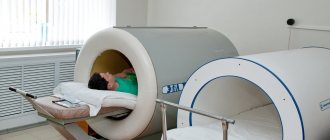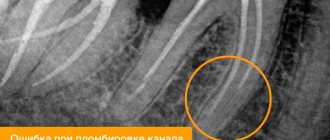From this article you will learn:
- Temperature after tooth extraction
- Why does the temperature rise after tooth extraction?
- In what other cases does hyperthermia occur?
- Are fevers associated with tooth extraction dangerous for children?
- How long does the temperature last after tooth extraction?
- How to help yourself at home with a hyperthermic reaction
- When you really can’t do without a doctor
- How to prevent your temperature from rising
- What is the role of the clinic in the prevention of hyperthermic conditions?
Tooth extraction in an adult or child is stressful, an operation, and unpleasant sensations before and after the procedure. And when it seems that everything is over, the patient discovers that he has a fever. Reaction – fear, repeated stress, worries.
Heat
Hyperthermia can be a natural reaction to surgery and a sign of a pathological condition. What should a patient do and when should he urgently seek medical help?
Why does the temperature rise after tooth extraction?
Hyperthermia is a natural reaction of the body to the action of pathogenic flora and viruses. They die at elevated temperatures. And the reason for visiting the dentist is precisely the infection of the oral cavity with pathogenic flora. The doctor’s task is to identify the causes of inflammation and stop its source.
Removal of a tooth
Reasons for tooth extraction:
- ineffectiveness of conservative treatment of periodontitis;
- impassable root canals;
- mobility of the dentition in periodontal diseases;
- damage to dental canals;
- purulent processes - abscess, phlegmon.
All diseases for which tooth extraction is one of the treatment methods cause infection with pathogenic flora. It is transmitted throughout the body by hematogenous route. Therefore, during treatment, and even more so during the removal of a molar, incisor or canine tooth, the wound may become infected.
If a wisdom tooth has been extracted, it is usually accompanied by a large wound. Stitches are required. Due to the weakness of the walls of the blood vessels, a hematoma can form. Before the procedure, the surgeon must warn the patient about this.
Therefore, an increase in temperature is a normal reaction to injury. But only if hyperthermia lasts 1–2 days after surgery and does not rise above 38 degrees. If the temperature increases and additional symptoms are added, then this is a reason to consult a doctor and find out the causes of this condition.
If there is bleeding
After difficult removal of the figure eight, bleeding may occur. It needs to be installed, but it is not always possible to do this in a short time. In severe cases, the dental surgeon places sutures on the postoperative wound and performs tamponade. Then the patient is recommended to apply a cold compress to the cheek for some time. It helps stop bleeding and quickly relieve swelling.
It is very important to understand what causes bleeding after surgery. Among the most common reasons:
- arterial hypertension or a sharp one-time increase in blood pressure;
- the use of anesthetics containing adrenaline (such drugs help dilate blood vessels);
- injury to the wound with the tongue or foreign objects;
- taking medications that reduce blood clotting;
- performing heavy physical work shortly after the intervention.
If bleeding continues throughout the day, this is abnormal. In such a situation, it is recommended to make an appointment with a doctor.
In what other cases does hyperthermia occur?
A visit to a maxillofacial surgeon and surgery is a stressful situation. The temperature can rise even against the background of emotional experiences.
Possible reasons for the increase in temperature after molar extraction:
- ARVI, acute respiratory infections, relapse of tonsillitis - intervention in the oral cavity causes a decrease in immunity. Therefore, surgery can be a provoking factor in chronic sore throats, making the patient more susceptible to pathogenic flora. Rhinorrhea, sneezing, coughing, and pain when swallowing are added to hyperthermia.
- Alveolitis is an infection of the tooth socket. After its removal, a blood clot forms in the socket.
- Its task is to prevent wound infection. If the doctor's recommendations are not followed - eating, chewing on the operated side, frequent rinsing - the clot detaches and the wound becomes infected. The result is inflammation, pus, severe pain and an increase in temperature to pyretic values.
- Mistakes by a dental surgeon when removing a tooth include excessive tissue trauma, leaving fragments and parts of the root in the socket.
If any unpleasant symptoms appear after removal of a molar, incisor or molar, you should contact an oral and maxillofacial surgeon.
Are fevers associated with tooth extraction dangerous for children?
Extraction of a molar, incisor or canine for children is carried out if the baby tooth interferes with the growth of the permanent one or when it is completely destroyed. But this is a simple removal, since baby teeth are not held tightly and, often, pain relief is not even required. The wound is small and does not bleed.
Fever after tooth extraction
An increase in temperature to 37–37.5 degrees is a normal reaction of the body. If the readings on the thermometer are higher, then you need to consult a dentist. If pathologies in the oral cavity are excluded, you should undergo an examination by a pediatrician.
When is elevated temperature normal?
Very often, after a tooth is pulled out, a person experiences various unpleasant symptoms. They are due to the fact that the figure eight has long and winding roots. It is also far away and always difficult to get to. In the absence of free access to the crown, removal always turns out to be quite traumatic.
In the first two days after extraction of the unit, the following phenomena are considered normal:
- increase in body temperature to 37-38°C;
- swelling and redness of the socket;
- pain in the wound area;
- general weakness.
If healing proceeds without complications, these symptoms disappear within one to two days. Of course, swelling and soreness take longer to go away, but body temperature should not remain elevated for a long time.
How to help yourself at home with a hyperthermic reaction
After extraction of a molar, canine or incisor, the surgeon will give recommendations and explain possible reactions of the body. Therefore, the patient must follow the rules of oral care:
- Do not consume food or drinks for 2 hours after the procedure. Do not chew on the affected side of the jaw.
- Take antibiotics as prescribed by your doctor, rinse your mouth with antiseptic solutions.
- If your temperature rises, you need to monitor your condition. It is allowed to take antipyretics based on paracetamol or ibuprofen as prescribed by a doctor. For adults - in tablet form, for children - in the form of syrups in dosages according to age or suppositories at night or during daytime sleep.
- Drinking plenty of fluids and rest are recommended. The patient should be in a ventilated area. There is no need to wrap yourself up or do any thermal procedures.
What you can and cannot do after tooth extraction
If the temperature does not subside on its own or the condition worsens, you should contact a medical facility. If it rises to 39 degrees or higher, call an ambulance.
When you really can’t do without a doctor
Any hyperthermia lasting more than 3 days is a reason to consult a doctor.
Symptoms after tooth extraction
Symptoms for immediate examination by a dental surgeon:
- increased pain 1–2 days after molar extraction;
- swelling of the gums, cheeks;
- gum hyperemia;
- discharge of blood and pus from the wound cavity;
- bad breath;
- enlarged lymph nodes under the lower jaw, behind the ears.
The dentist will conduct an examination. According to indications - cleaning and washing the wound, removing tooth fragments or roots, applying antibacterial drugs to the wound, suturing the wound.
After cleaning the wound, the inflammation subsides and the temperature drops. The doctor will prescribe additional treatment - a visit to wash the wound and apply antibacterial dressings, take antibiotics, rinse with antiseptics.
How to prevent your temperature from rising
- After extraction of a molar, incisor or molar, the doctor’s recommendations should be followed. How to behave as a patient:
- do not eat or drink for the first 2 hours;
- do not chew on the affected part of the jaw;
- do not smoke – preferably for several days and definitely on the first day after the procedure;
- do not rinse your mouth without a doctor’s prescription - this helps wash out the blood clot;
- Until recovery, refrain from visiting public places - baths, saunas, procedures with a cosmetologist;
- do not touch the wound with your fingers or a toothbrush;
- take prescribed antibiotics, anti-inflammatory drugs;
- come for examination at the appointed time;
- do not heat or rinse your mouth with alcohol-containing preparations, vodka, or alcohol.
A day or two after removal, the doctor will prescribe baths with antibacterial drugs. The liquid should be collected and held, but not rinsed.
When to sound the alarm
- It happens that removal turns out to be difficult. Then the doctor warns the patient in advance about possible complications and tells him to come for a follow-up appointment in the coming days. You should sound the alarm if:
- Symptoms of a viral disease are observed. Then the fever persists for longer than three days. Cough, runny nose, and throat congestion appear. Efficiency decreases.
- After one or two days the temperature does not decline, but on the contrary, begins to rise. If it stays at 38.5-39 degrees throughout the day, you should seek medical help as soon as possible.
- Signs of inflammation in the oral cavity have become more pronounced. The gums are more swollen, accumulations of pus are visualized in the socket area, and there is no blood seal. This indicates complications.
Dry socket is especially dangerous. They talk about it if a dense blood clot does not form at the site of the pulled out tooth. The wound remains open to infection, which means that regenerative processes do not proceed correctly.
What is the role of the clinic in the prevention of hyperthermic conditions?
The clinic’s task is to create all conditions for the patient’s recovery and prevent the development of complications. What is required for this:
- The operation is performed under aseptic conditions by an experienced doctor in compliance with all standards and treatment protocols.
- The surgeon must explain to the patient the sequence of his actions, the rules of behavior after removing an incisor, molar or canine. Prescribe treatment and conduct follow-up examinations. If necessary, adjustment of prescriptions.
- If complications develop, provide high-quality and timely medical care.
Recovery after surgery depends on the quality of the surgeon’s work and the patient’s compliance with his recommendations. Hyperthermia after tooth extraction is a normal reaction of the body. You shouldn't be afraid of her. If the temperature has risen above pyretic values - from 38 degrees and above, then you need to urgently contact the clinic for examination and treatment correction.
Edema
Swelling is another unpleasant consequence of tooth extraction. As a rule, it appears the next day after surgery and reaches its maximum value on the third day, after which it begins to decrease.
Cold compresses can be used to reduce swelling. To do this, you need to prepare ice cubes in advance, wrap them in cloth and apply them to the operation site for no more than twenty minutes. After a twenty-minute break, the procedure can be repeated. But it should be remembered that this method is effective in combating edema only in the first thirty-six hours after surgery.










